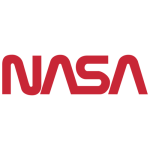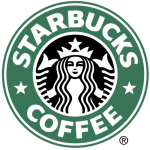What is Branding vs a Logo?
7 min to read
When you’re developing marketing materials for your business, you might hear the terms “brand” and “logo” used interchangeably. However, these two concepts have distinct differences, roles, and significance. A logo is simply one element of a broader branding strategy. Below, we’ll clarify the differences between a logo and branding, look at the concept of brand identity, and walk through the different types of logos.
Table of Contents:
- What Is a Logo?
- What Is a Brand?
- What’s the Difference Between a Logo and Branding?
- What Are the Different Types of Logos?
- Frequently Asked Questions: What’s the Difference Between a Logo and a Brand?
- Contact Colab Los Angeles for Your Company’s Branding Needs
What Is a Logo?
A logo is often the first thing we think about when we discuss a new business or a brand that we like. Logos are a visual symbol or graphic representation that serves as a recognizable and distinctive mark for a company, product, or service. It is a condensed, visual representation of a brand and is typically composed of elements such as symbols, text, or a combination of both. Logos are designed to be easily identifiable and memorable, playing a crucial role in creating a visual connection between a brand and its audience.
While logos are often designed to feature distinctive colors, they should also work when presented in one color. This speaks to the simplicity of their design.
What Is a Brand?
A brand, on the other hand, is a comprehensive and multifaceted concept that goes beyond visual elements. A brand encompasses the entire perception and experience that people have with a company, product, or service. It is a culmination of the company’s values, mission, personality, and the emotional connections it forms with its audience. A brand is the sum total of all interactions and impressions that a business makes on its customers, employees, and the public.
What’s the Difference Between a Logo and Branding?
The difference between a logo and branding lies in their scope and purpose. A logo is a visual symbol, a recognizable mark that represents a brand. It’s essential when creating your brand’s visual identity. On the other hand, branding is a comprehensive strategy that encompasses the entire perception of a brand. It includes visual elements like logos, color schemes, and typography, as well as verbal elements such as messaging and tone.
Branding extends beyond the visual to shape the overall experience, emotions, and values associated with a brand, creating a holistic and cohesive identity that resonates with the audience.
How Does a Logo Contribute to Branding?
A logo is a vital component of a brand’s visual identity, contributing to the overall brand recognition and recall. It serves as a visual shorthand, instantly connecting customers with the brand. However, a logo alone does not define a brand. It is part of a broader branding strategy that includes various elements working together to create a cohesive brand identity.
A well-designed logo should reflect the brand’s personality, values, and positioning. It acts as a visual anchor, providing a consistent visual representation across different touchpoints, including websites, packaging, marketing materials, and more.
Logo and Branding: Which Comes First?
The relationship between a logo and branding is symbiotic, but the branding process typically comes first. Before designing a logo, a brand needs to establish its identity, values, and messaging. The logo then becomes a visual manifestation of these foundational elements. In the branding process, a company defines its mission, target audience, and unique selling propositions, which guide the design of a logo that visually represents these aspects.
What Are the Different Types of Logos?
When creating your logo, you can go in many different directions. Each type of logo comes with its own characteristics and applications. What’s a logo vs a wordmark? Below, we’ll walk through the different types of logos so you can choose the one that aligns best with your brand identity.
1. Lettermark:
Lettermark logos use the initials or an acronym of a brand to create a distinctive symbol. Examples include IBM and NASA. Lettermarks are useful for brands with long names or those looking for a concise and memorable representation.

2. Wordmark:
A wordmark logo consists of the brand’s name in a stylized, custom font. Examples include Coca-Cola and Google. Wordmarks are effective for brands with distinctive names or when the name itself carries significant brand equity.

3. Pictorial:
Pictorial logos use a graphic or symbol to represent the brand, without incorporating the company name. Examples include the Apple logo and the Twitter bird. Pictorial logos are visually striking and can convey a brand’s identity without relying on text.

4. Combination Mark:
Combination marks integrate both text and a symbol or icon. Examples include Adidas and Burger King. This type of logo provides the flexibility of using the full brand name or the symbol alone, offering versatility in branding applications.

5. Mascot:
Mascot logos feature an illustrated character that represents the brand. Examples include the Michelin Man and the KFC Colonel. Mascots add a human or anthropomorphic element, making the brand more approachable and memorable.

6. Emblem:
Emblem logos combine a pictorial element with the brand name, often enclosed within a shape. Examples include Harley-Davidson and Starbucks. Emblems convey a sense of tradition and are commonly used by brands with a heritage or established history.

7. Abstract:
Abstract logos use non-representational shapes, forms, or patterns to create a unique and memorable visual identity. Examples include the Nike swoosh and the Pepsi globe. Abstract logos allow for creative expression and can convey a brand’s innovative or modern attributes.
Understanding these logo types makes it easier for you to select a design that connects with your brand’s personality, values, and target audience.
Frequently Asked Questions: What’s The Difference Between A Logo And A Brand?
Q: What is the primary purpose of a logo?
The primary purpose of a logo is to serve as a distinctive visual symbol that represents a brand. It fosters instant recognition, establishes brand identity, and creates a memorable connection with the audience. A well-designed logo conveys the essence, values, and personality of the brand in a compact and memorable form.
Q: How does branding go beyond a logo?
Branding extends beyond a logo by encompassing a holistic strategy that shapes the entire brand experience. It extends to visual elements like color schemes, typography, and imagery, as well as verbal elements such as messaging and tone. Successful branding creates a cohesive and resonant identity that goes beyond a singular visual mark.
Q: What is brand identity?
Brand identity is the visual and verbal representation of a brand, including elements like logos, color schemes, typography, and messaging. A cohesive and strong brand identity fosters recognition, trust, and a distinct connection with your target audience.
Q: How does a logo contribute to brand identity?
A logo contributes to brand identity by serving as a visual representation of the brand’s values, personality, and positioning.
Q: Which comes first: logo or branding?
In the branding process, a brand is established before designing a logo. The logo then becomes a visual manifestation of the brand’s identity.
Q: What are the different types of logos?
Logo types include lettermarks, wordmarks, combination marks, pictorial, mascot, emblem, and abstract, each with unique characteristics and applications.
Q: How does branding create a consistent brand identity?
Branding creates a consistent brand identity by establishing cohesive visual and verbal elements, ensuring a uniform experience across various touchpoints.
Q: Can a logo change while maintaining the same brand?
Yes, a logo can change over time without compromising the brand, as long as the change aligns with the evolving values and identity of the brand.
Q: Is a logo the most crucial element in branding?
While a logo is crucial, it’s just one element in a broader branding strategy. Successful branding involves a holistic approach, incorporating various elements for a comprehensive brand identity.
Contact COLAB Los Angeles for Your Company’s Branding Needs
While a logo is a crucial element of a brand’s visual identity, it is just one component of a broader branding strategy. A brand encompasses the entire perception and experience that people have with a business. Successful branding involves creating a cohesive and consistent brand identity that extends beyond the logo, encompassing visual and verbal elements that resonate with the target audience. The interplay between a well-designed logo and a comprehensive branding strategy sets the stage for building a strong and memorable brand presence in the market.
Contact COLAB Los Angeles if you need to develop your company’s brand, logo, or marketing materials. We have over ten years of experience working with ecommerce and small businesses, including branding, design, and digital marketing.








